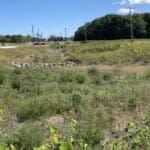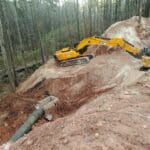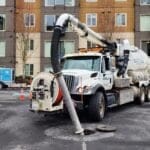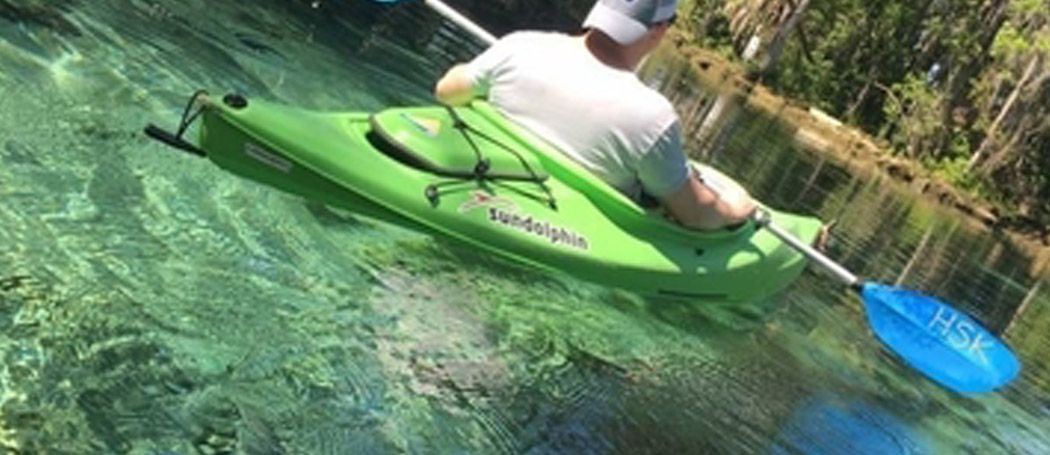Preparing for BMP Inspection in the Southeast: How to be Raintime-Ready
by Jim Leamy, Senior Manager of Quality Assurance
The Southeast US is going through a major growth spurt, and the growing pains the area is going through are exacerbated by the drastic increase in intense seasonal storms. This is creating major stormwater runoff and infiltration challenges as cities create impermeable surfaces and as six of the ten largest states in terms of prevalence of urban sprawl come from this region[1]. Here in Durham, NC, the summers are humid and wet, and the winters are, well, also wet. Runoff from our heavy downpours regularly wreak havoc on businesses and can result in hefty stormwater fines if not managed properly. In order to be totally prepared for the variety of weather and the prevalence of urban sprawl in the Southeast, your business needs to be ready for its looming BMP inspection.
Common Best Management Practices (BMPs)
BMPs are engineered systems designed to reduce the impact of stormwater runoff by filtering and infiltrating pollutants. They also control discharge volumes to prevent erosion and flooding downstream.2 BMPs can be structural (like porous pavements and underground reservoirs) or vegetative (like controlled landscaping and grass swales). Some BMPs, like detention ponds, are a combination of both types. The properties you own will have been strategically designed based on its topography, the uphill and downhill watershed, and its climate, to include appropriate BMPs for usually handling a “hundred-year storm.” Available land/space, flood zones, and storm frequency all affected these civil engineering decisions. The heavy periods of rainfall the Southeast is known for have shaped our seen and unseen BMPs.
Detention and retention basins are common sights when driving around the Southeast and are on the radar of any county inspector preparing a site inspection. They can be both dry or wet and filter and distribute stormwater during periods of rainfall. Dry basins are (as the name will suggest) permanently dry throughout the year, and during rain events, are used to detain water and promote infiltration and sedimentation of solids. Excess rain is kept within the basin and slowly released through an outlet system to control and prevent downstream erosion. Meanwhile, wet detention basins are permanently saturated year-round and instead infiltrate and filter stormwater through biological processes within the soil and plants.3 Detention basins can be used to solve the issue of impervious surface, as they oftentimes have porous soils and infiltrate well. With the weather that is experienced in the Southeast, and the increased area of impervious surface, it is no wonder why these systems are so prevalent.
A BMP inspection of a Southeast detention basin can reveal a variety of deficiencies, each requiring corrective measures to keep your business compliant with local regulations. A driver for repair may take the form of trash accumulation, sedimentation, excessive or invasive vegetation growth, and structural issues. When issues arise within your detention basin, there will be a decrease in water being discharged and infiltrated, and this could cause the system to be ineffective. Sediment and trash building up at the basin’s discharge point for example can cause a flood in the basin, while a blockage at the inlet to the pond can cause a flood at all the catch basins in your parking lot that feed to that detention basin.
Level spreaders are used to deter that erosion. These often look like long, perfectly level concrete walls that somebody built a contoured lawn on top of and can be installed both upstream and downstream of the stormwater control system. Water that travels in high volumes can cause erosion downstream as it blasts into banks and destroys the natural ecosystem. When installed upstream, level spreaders can assist with pollutant and sediment uptake, and downstream they are installed to ensure that water does not continue to recollect and travel in high volumes. The shape and placement of level spreaders force flowing water to progress down a path over a wide area. This slows down the progress of the water and dissipates the force, drastically reducing erosion. The sheet flow of the water may be disrupted as sediment builds up on either side of the structure. Over the years, BMP inspections will reveal cracks and chips forming and becoming larger, creating a channel that reduces the ability of the system to spread out the water.
Managing Quantity and Ensuring Quality Downstream
When maintaining your BMP we will have two objectives to make sure your system is functioning correctly: A quantity check will be used to measure the volume of water coming from your stormwater system to waters of the state, and a quality check will handle pollution and sediment removal. It is important for regular maintenance to be performed on your system, because if left unmaintained the problems will get worse and more expensive to fix. BMP systems are designed to be compliant with state and local stormwater standards so that the property does not turn a major storm event into an emergency for you and your downstream stakeholders.
These systems are designed in such a way that with proper maintenance and repair from a stormwater specialist they will be stormwater compliant and ready for the next BMP inspection.4 At AQUALIS we pride ourselves in the fact that we are the only stormwater company that focuses entirely on stormwater. We have 5 areas of expertise to ensure that your stormwater system is working properly and following regulations; these five areas include management, maintenance, repair, consultation and emergency response. It is critical to make sure your stormwater system is following state laws and regulations, and of course, reach out to our experts with any questions that might come up!
1 | Stott, Rory. “Urban Sprawl in the U.S: The 10 Worst Offenders.” Arch Daily, 25 Apr. 2014, https://www.archdaily.com/500409/urban-sprawl-in-the-us-the-10-worst-offenders .
2 | “Stormwater Management: Best Management Practices (BMP’s).” Rouge River Nation Wet Weather Demonstration Project.
3 | Photo Book of Storm Water Features. Charlotte: Charlotte-Mecklenburg Storm Water Services, 2006. Print.
4 | Featherston, Emily. “Drain on the System: Stormwater Infrastructure in Focus in the Wake of Florence.” WECT News. https://www.wect.com/2019/04/22/drain-system-stormwater-infrastructure-f…, 22 Apr. 2019. Web. 5 June 2019.
Image from Flickr CC user Phil Roeder. https://flic.kr/p/T4fTNy
 Kenosha, Wis. Highway KR Regenerative Stormwater ConveyanceThe Root-Pike Watershed Initiative Network Kenosha County, and others worked with AQUALIS to design and implement an innovative solution for stormwater control along Highway KR.
Kenosha, Wis. Highway KR Regenerative Stormwater ConveyanceThe Root-Pike Watershed Initiative Network Kenosha County, and others worked with AQUALIS to design and implement an innovative solution for stormwater control along Highway KR. Durham, N.C. Sinkhole Leads to Stormwater System RehabilitationThe tenant on this property noticed a depression that opened to the ground below and notified the property owners.
Durham, N.C. Sinkhole Leads to Stormwater System RehabilitationThe tenant on this property noticed a depression that opened to the ground below and notified the property owners.

